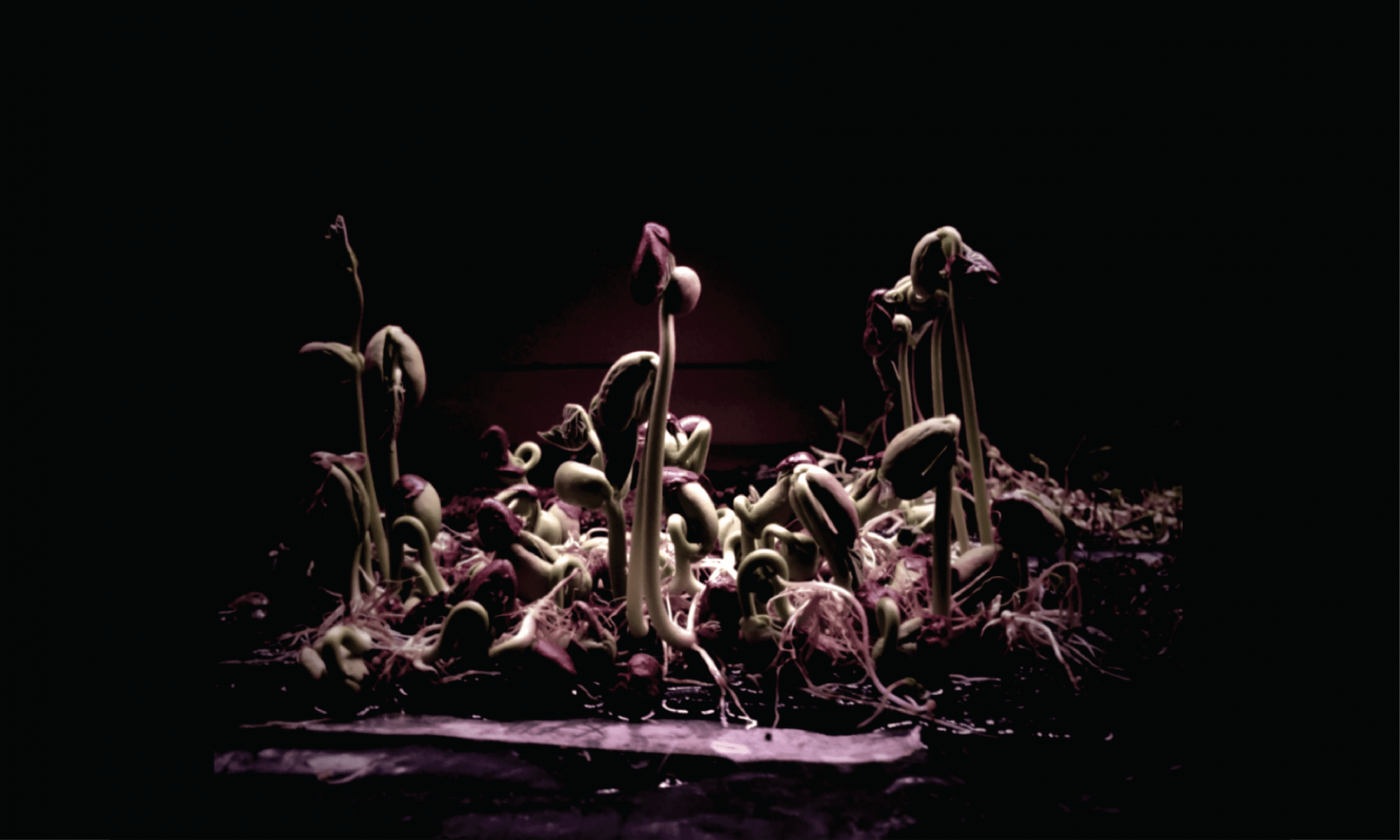 Dr. Gabrielian’s recently completed project Communal Exhale featured in Charlotte Kent’s essay “Art and the State of Water” published in the Brooklyn Rail, focusing on artists whose work addresses water rights in the wake of recent Supreme Court decisions.
Dr. Gabrielian’s recently completed project Communal Exhale featured in Charlotte Kent’s essay “Art and the State of Water” published in the Brooklyn Rail, focusing on artists whose work addresses water rights in the wake of recent Supreme Court decisions. Dr. Gabrielian presents her ongoing creative work and forthcoming book at the New Museum as part of NEW INC’s DEMO2023 festival.
Dr. Gabrielian presents her ongoing creative work and forthcoming book at the New Museum as part of NEW INC’s DEMO2023 festival.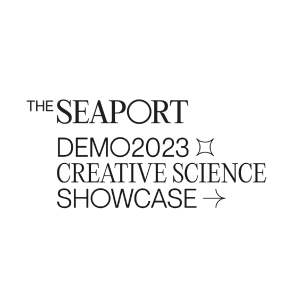 Dr. Gabrielian exhibits 60 days worth of liquid breath co-produced by humans and fungi, titled Communal Exhale, at Pier 17 in the South Street Seaport in NYC as part of NEW INC’s Creative Science showcase.
Dr. Gabrielian exhibits 60 days worth of liquid breath co-produced by humans and fungi, titled Communal Exhale, at Pier 17 in the South Street Seaport in NYC as part of NEW INC’s Creative Science showcase. Student researchers from the Animal Architectures desing-research track exhibit their work at Clockshop, Los Angeles multidisciplinary arts organization.
Student researchers from the Animal Architectures desing-research track exhibit their work at Clockshop, Los Angeles multidisciplinary arts organization.
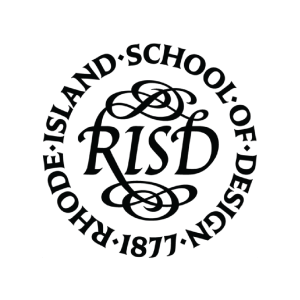
Dr. Gabrielian presents her design-research at Rhode Island School of Design’s Nature-Culture-Sustainability Studies program, organized by Anastasiia Raina.
 Dr. Gabrielian presents her design-research at the Art Center College of Design’s Media Design Practices Spring colloquium, ‘Eco-Imaginaries,’ organized by Mashinka Firunts Hakopian and Tim Durfee.
Dr. Gabrielian presents her design-research at the Art Center College of Design’s Media Design Practices Spring colloquium, ‘Eco-Imaginaries,’ organized by Mashinka Firunts Hakopian and Tim Durfee. Dr. Gabrielian demonstrated her recent design prototype in an exhibit titled Liquid Breath at SOLO-la, a new venue in Santa Monica that invites one artist, for one day, to exhibit work in one room.
Dr. Gabrielian demonstrated her recent design prototype in an exhibit titled Liquid Breath at SOLO-la, a new venue in Santa Monica that invites one artist, for one day, to exhibit work in one room. Dr. Gabrielian in conversation with futurist Stuart Candy about what the futures field might offer Landscape Architecture published in LA+ Interdisciplinary Journal of Landscape Architecture, Vol. 16: Speculation.
Dr. Gabrielian in conversation with futurist Stuart Candy about what the futures field might offer Landscape Architecture published in LA+ Interdisciplinary Journal of Landscape Architecture, Vol. 16: Speculation.
Dr. Gabrielian selected as part of this year’s cohort in the Creative Science track within NEWINC, the art & technology incubator at the New Museum, in New York City.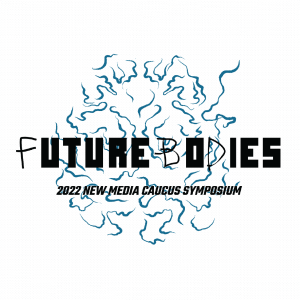 Dr. Gabrielian presents her design-research on water production mechanisms within human-fungal networks, at the New Media Caucus’ Future Bodies symposium.
Dr. Gabrielian presents her design-research on water production mechanisms within human-fungal networks, at the New Media Caucus’ Future Bodies symposium. Dr. Gabrielian serves as a respondent for conversation with Harpreet Sareen on convergence mechanisms with non-human organisms in the Anthropocene, hosted by the Center on Science, Technology, and Public Life, and the Berggruen Institute.
Dr. Gabrielian serves as a respondent for conversation with Harpreet Sareen on convergence mechanisms with non-human organisms in the Anthropocene, hosted by the Center on Science, Technology, and Public Life, and the Berggruen Institute. Dr. Gabrielian presents her design-research across ecologic and biologic systems at the annual USC Sustainability Seminar, organized by the Wrigley Institute of Environmental Studies.
Dr. Gabrielian presents her design-research across ecologic and biologic systems at the annual USC Sustainability Seminar, organized by the Wrigley Institute of Environmental Studies. Dr. Gabrielian gives a gallery talk in conjunction with her exhibit at the ACSA Summit for Climate Agency: Experimental Landings Exhibition in New York City.
Dr. Gabrielian gives a gallery talk in conjunction with her exhibit at the ACSA Summit for Climate Agency: Experimental Landings Exhibition in New York City. Dr. Gabrielian part of team awarded Visions and Voices grant for exploring the disappearing world of the Audubon in collaboration with USC Libraries and the Los Angeles multidisciplinary arts organization Clockshop.
Dr. Gabrielian part of team awarded Visions and Voices grant for exploring the disappearing world of the Audubon in collaboration with USC Libraries and the Los Angeles multidisciplinary arts organization Clockshop.
 Dr. Gabrielian participates in National Science Foundation workshop focusing on the use the emerging Rules of Life to address the complexities of interconnected living systems at multiple scales – from natural and synthetic cells to organisms, populations, communities, ecosystems, and the biosphere – to arrive at more sustainable futures.
Dr. Gabrielian participates in National Science Foundation workshop focusing on the use the emerging Rules of Life to address the complexities of interconnected living systems at multiple scales – from natural and synthetic cells to organisms, populations, communities, ecosystems, and the biosphere – to arrive at more sustainable futures. Dr. Gabrielian part of team awarded Research and Development (R&D) Priorities Award in Sustainability to examine the carbon sequestration potentials of kelp-based fertilizers in partnership with TestPlot and USC Department of Biological Sciences.
Dr. Gabrielian part of team awarded Research and Development (R&D) Priorities Award in Sustainability to examine the carbon sequestration potentials of kelp-based fertilizers in partnership with TestPlot and USC Department of Biological Sciences. Student Researchers Dani Takahashi, Summer Xiang, and Bradley Manucha represent USC with their design-research project, Prosthetic B-Habitat from Dr. Gabrielian’s biodesign course, during the annual Biodesign Challenge Summit, which brings together students, scientists, artists, and designers to envision, create, and critique transformational applications in biotech.
Student Researchers Dani Takahashi, Summer Xiang, and Bradley Manucha represent USC with their design-research project, Prosthetic B-Habitat from Dr. Gabrielian’s biodesign course, during the annual Biodesign Challenge Summit, which brings together students, scientists, artists, and designers to envision, create, and critique transformational applications in biotech.
 Dr. Gabrielian part of team awarded the Provost’s Strategic Directions for Research Award for developing industry partnership with AltaSea to sustainably farm our oceans.
Dr. Gabrielian part of team awarded the Provost’s Strategic Directions for Research Award for developing industry partnership with AltaSea to sustainably farm our oceans. Student researcher Luis Mota selected to be part of Dumbarton Oaks’ Garden and Landscape Studies Workshop supported by the Mellon Initiative in Urban Landscape Studies, to develop his research from the Landscapes in Drift design-research track.
Student researcher Luis Mota selected to be part of Dumbarton Oaks’ Garden and Landscape Studies Workshop supported by the Mellon Initiative in Urban Landscape Studies, to develop his research from the Landscapes in Drift design-research track.

Student researchers Ana Mangino, Zoe Lee, and Andrea Binz’s work developed as part of the Future Symbionts research track exhibited at the Philadelphia Science Center Esther Klein Gallery showcasing works at the convergence of art, design, and biology that interrogate how biotech impacts current and future cultures and ecosystems.

Student researchers Andrea Binz and Colin Amos’ work from the Landscape Beyond Land research track exhibited at the National Building Museum as part of the Grounding the Green New Deal Summit on Design, Policy, and Advocacy.  Dr. Gabrielian presents her design-research focused on the ocean at the annual Council of Educators in Landscape Architecture (CELA) conference, the theme of which this year was Evolving Norms.
Dr. Gabrielian presents her design-research focused on the ocean at the annual Council of Educators in Landscape Architecture (CELA) conference, the theme of which this year was Evolving Norms. Dr. Gabrielian’s creative work is featured in German book, Unsere Zukunft Träumen und Gestalten (trans: “Dreaming and Designing our Future”), illustrated by Patricia Thoma to encourage children to think creatively and critically about their environmental future.
Dr. Gabrielian’s creative work is featured in German book, Unsere Zukunft Träumen und Gestalten (trans: “Dreaming and Designing our Future”), illustrated by Patricia Thoma to encourage children to think creatively and critically about their environmental future. Funded through the USC Office of Sustainability, the Annenberg Innovation Lab, and Arts in Action, student researchers Nehali Doshi and Dani Velasco receive USC Arts in Climate Collective award for their work developed in the Landscape Beyond Land research track to collaborate with indigenous knowledge holders on sacred sites and regenerative aquacultural practices.
Funded through the USC Office of Sustainability, the Annenberg Innovation Lab, and Arts in Action, student researchers Nehali Doshi and Dani Velasco receive USC Arts in Climate Collective award for their work developed in the Landscape Beyond Land research track to collaborate with indigenous knowledge holders on sacred sites and regenerative aquacultural practices.
 Student researchers Andrea Binz and Colin Amos’ work from the Landscape Beyond Land research track featured as part of 55 curated projects by the Green New Deal Superstudio that best exemplify how the framework of the Green New Deal can be translated into design and planning projects, where they should take place, what will they should look like, and who they will serve.
Student researchers Andrea Binz and Colin Amos’ work from the Landscape Beyond Land research track featured as part of 55 curated projects by the Green New Deal Superstudio that best exemplify how the framework of the Green New Deal can be translated into design and planning projects, where they should take place, what will they should look like, and who they will serve. Dr. Gabrielian presents a recent proposal focusing on the design of regenerative aquacultural systems at the Giant Kelp Cluster, advancing microalgal R&D and farming at AltaSea.
Dr. Gabrielian presents a recent proposal focusing on the design of regenerative aquacultural systems at the Giant Kelp Cluster, advancing microalgal R&D and farming at AltaSea. Dr. Gabrielian presents prospects for designing aquacultural systems as climate infrastructure at the Blue Economy Webinar Panel Discussion focused on Climate and Ocean Ecosystems organized by Braid Theory.
Dr. Gabrielian presents prospects for designing aquacultural systems as climate infrastructure at the Blue Economy Webinar Panel Discussion focused on Climate and Ocean Ecosystems organized by Braid Theory.
Student researcher Jared Edgar McNight’s work on soil building processes as part of the Building Soils in the Anthropocene research tack featured in the October issue of Landscape Architecture Magazine. Student researcher Jared Edgar McNight receives ASLA Honor award in the general design category for his work on revitalizing salinic soils, developed as part of the Landscape Futures Lab’s, Building Soils in the Anthropocene track.
Student researcher Jared Edgar McNight receives ASLA Honor award in the general design category for his work on revitalizing salinic soils, developed as part of the Landscape Futures Lab’s, Building Soils in the Anthropocene track. Student researchers Ana Mangino, Zoe Lee, and Andrea Binz selected as finalists for the Science Sandbox Prize for Public Engagement which explores the multitude of impacts biotechnology has on society, amplifying public discussion on desirable and undesirable biotech futures, challenging cultural norms around human identity, social relationships, and ultimately humanity’s place in the living world.
Student researchers Ana Mangino, Zoe Lee, and Andrea Binz selected as finalists for the Science Sandbox Prize for Public Engagement which explores the multitude of impacts biotechnology has on society, amplifying public discussion on desirable and undesirable biotech futures, challenging cultural norms around human identity, social relationships, and ultimately humanity’s place in the living world.

Dr. Gabrielian part of team awarded the James H. Zumberge Research & Innovation Fund Interdisciplinary Grant for collaboration on microscopic landscapes, utilizing intravital hyperspectral microscopy to observe intimate mutualistic interactions across living kingdoms. Dr. Gabrielian presents “Designing Environmental Futures from Landscapes to Materials,” focusing on design-research work at the intersection of ecological and biological design, at the American University of Armenia Acopian Center for the Environment.
Dr. Gabrielian presents “Designing Environmental Futures from Landscapes to Materials,” focusing on design-research work at the intersection of ecological and biological design, at the American University of Armenia Acopian Center for the Environment.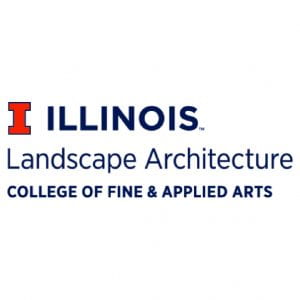 Dr. Gabrielian discusses her creative practice and the design-research work she has been advancing with students at the Landscape Futures Lab during the University of Illinois symposium, Wild Zones: Designing for Urban Wildlife at the Intersection of Landscape Architecture, Biology, and Public Policy.
Dr. Gabrielian discusses her creative practice and the design-research work she has been advancing with students at the Landscape Futures Lab during the University of Illinois symposium, Wild Zones: Designing for Urban Wildlife at the Intersection of Landscape Architecture, Biology, and Public Policy.
 Dr. Gabrielian presents her design-research focused on soil building processes at the annual Council of Educators in Landscape Architecture (CELA) conference, the theme of which this year was Resilience.
Dr. Gabrielian presents her design-research focused on soil building processes at the annual Council of Educators in Landscape Architecture (CELA) conference, the theme of which this year was Resilience. Dr. Gabrielian joins Landscape Architecture + Urbanism program director Alison Hirsch as the Somerville Visiting Lecturers at the University of Calgary’s School of Architecture, Planning, and Landscape – participating in a panel discussion on Matter, Metabolism, and Memories, moderated by the Advocates for Equitable Design Education.
Dr. Gabrielian joins Landscape Architecture + Urbanism program director Alison Hirsch as the Somerville Visiting Lecturers at the University of Calgary’s School of Architecture, Planning, and Landscape – participating in a panel discussion on Matter, Metabolism, and Memories, moderated by the Advocates for Equitable Design Education. The Landscape Futures Lab joins forces with the Landscape Justice Initiative to co-curate a semester long interdisciplinary series on the multiple manifestations and meanings of the GROUND, to better understand how we (humans) situate ourselves in the world and in relation to each other, to our pasts, and to the more-than-human – materials, systems, species.
The Landscape Futures Lab joins forces with the Landscape Justice Initiative to co-curate a semester long interdisciplinary series on the multiple manifestations and meanings of the GROUND, to better understand how we (humans) situate ourselves in the world and in relation to each other, to our pasts, and to the more-than-human – materials, systems, species.
 Dr. Gabrielian receives an AGBU + Creative Armenia Arts Foundation Fellowship, awarded to visionary creative professionals of Armenian descent who are pushing the boundaries of our creative future.
Dr. Gabrielian receives an AGBU + Creative Armenia Arts Foundation Fellowship, awarded to visionary creative professionals of Armenian descent who are pushing the boundaries of our creative future.
 Dr. Gabrielian’s design-research on wearable farms and living garments exhibited at the Eli and Edythe Broad Museum Art Lab in East Lansing, Michigan.
Dr. Gabrielian’s design-research on wearable farms and living garments exhibited at the Eli and Edythe Broad Museum Art Lab in East Lansing, Michigan. Dr. Gabrielian’s design-research on water production within human-fungal networks, receives an honorable mention from LA+ Creature: International Design Ideas Competition.
Dr. Gabrielian’s design-research on water production within human-fungal networks, receives an honorable mention from LA+ Creature: International Design Ideas Competition. Dr. Gabrielian joins an inspiring group of artists and scholars focused on advancing the use of human waste as a resource through creative practice, research, education and technological innovation, at the annual Rich Earth Institute Summit.
Dr. Gabrielian joins an inspiring group of artists and scholars focused on advancing the use of human waste as a resource through creative practice, research, education and technological innovation, at the annual Rich Earth Institute Summit. Dr. Gabrielian presents her design-research on water production within human-fungal networks, during public presentations (live-streamed from the Netherlands), as part of the shortlisted group of design-researchers competing for the Bio Art + Design Awards.
Dr. Gabrielian presents her design-research on water production within human-fungal networks, during public presentations (live-streamed from the Netherlands), as part of the shortlisted group of design-researchers competing for the Bio Art + Design Awards. Dr. Gabrielian receives Research in Architecture Grant supporting impactful research and creative work at the School of Architecture to fund Near-Extinction Rituals, her forthcoming book and three associated design prototypes which speculate on our Anthropocenic crises in order to imagine new ways of living more cooperatively with the more-than-human world.
Dr. Gabrielian receives Research in Architecture Grant supporting impactful research and creative work at the School of Architecture to fund Near-Extinction Rituals, her forthcoming book and three associated design prototypes which speculate on our Anthropocenic crises in order to imagine new ways of living more cooperatively with the more-than-human world. Dr. Gabrielian joins a leading group of experts to discuss emerging ideas related to materials in design practice in the latest Briefing section of AIA’s ArcCADigest.
Dr. Gabrielian joins a leading group of experts to discuss emerging ideas related to materials in design practice in the latest Briefing section of AIA’s ArcCADigest. Student Researchers Tessa Kennedy, Qingru Yang, and Jong Jook Kim represent USC with their design-research project, (Eco)stic Tiles from Dr. Gabrielian’s biodesign course, during the annual Biodesign Challenge Summit, which brings together students, scientists, artists, and designers to envision, create, and critique transformational applications in biotech.
Student Researchers Tessa Kennedy, Qingru Yang, and Jong Jook Kim represent USC with their design-research project, (Eco)stic Tiles from Dr. Gabrielian’s biodesign course, during the annual Biodesign Challenge Summit, which brings together students, scientists, artists, and designers to envision, create, and critique transformational applications in biotech. Dr. Gabrielian moderates the annual USC School of Architecture Research Symposium on the topic of Art+Tech+Environment.
Dr. Gabrielian moderates the annual USC School of Architecture Research Symposium on the topic of Art+Tech+Environment. Dr. Gabrielian’s design-research exhibited at Science Gallery Detroit as part of the Future Present: Design in a Time of Urgency exhibit.
Dr. Gabrielian’s design-research exhibited at Science Gallery Detroit as part of the Future Present: Design in a Time of Urgency exhibit. Dr. Gabrielian and M.L.A program director Alison Hirsch present their climate oriented research, Climate Imaginaries, at Occidental College as part of the UN Week on Climate Change.
Dr. Gabrielian and M.L.A program director Alison Hirsch present their climate oriented research, Climate Imaginaries, at Occidental College as part of the UN Week on Climate Change. Student Researcher Jared Edgar McKnight’s work conducted in Dr. Gabrielian’s studio on soil formation, exhibited at the Architecture + Design Museum in Los Angeles as part of the Future of _ Space exhibit.
Student Researcher Jared Edgar McKnight’s work conducted in Dr. Gabrielian’s studio on soil formation, exhibited at the Architecture + Design Museum in Los Angeles as part of the Future of _ Space exhibit. Dr. Gabrielian’s Spring 2020 option studio Landscape at the Intersection of Life and Death, focused on soil building processes, connecting the topic to the future of burial landscapes.
Dr. Gabrielian’s Spring 2020 option studio Landscape at the Intersection of Life and Death, focused on soil building processes, connecting the topic to the future of burial landscapes. Dr. Gabrielian’s design-research on wearable farms and living garments featured on Forbes: Worried About Food Scarcity? Try This Wearable Garden On For Size.
Dr. Gabrielian’s design-research on wearable farms and living garments featured on Forbes: Worried About Food Scarcity? Try This Wearable Garden On For Size. Dr. Gabrielian discusses her design-research focused on the future of food production in Canadian Broadcast Corporation radio interview.
Dr. Gabrielian discusses her design-research focused on the future of food production in Canadian Broadcast Corporation radio interview. Dr. Gabrielian’s design-research on wearable farms and living garments featured on FastCompany: This wearable vest grows you personal crops—fertilized just for you by your own waste.
Dr. Gabrielian’s design-research on wearable farms and living garments featured on FastCompany: This wearable vest grows you personal crops—fertilized just for you by your own waste. Dr. Gabrielian presents her research at the Penny W. Stamps School Of Art & Design at University of Michigan as part of the Border Control Symposium organized by the New Media Caucus which calls borders into question and asks how artists and designers navigate and negotiate borders in their research and practice.
Dr. Gabrielian presents her research at the Penny W. Stamps School Of Art & Design at University of Michigan as part of the Border Control Symposium organized by the New Media Caucus which calls borders into question and asks how artists and designers navigate and negotiate borders in their research and practice. Dr. Gabrielian participates in a panel discussion focused on how artists and designers adopt the absurd to pry apart static ways of thinking about climate change, urban spaces, artificial intelligence, genetics, gender, among other disciplinary categories at the annual RadicalXChange conference.
Dr. Gabrielian participates in a panel discussion focused on how artists and designers adopt the absurd to pry apart static ways of thinking about climate change, urban spaces, artificial intelligence, genetics, gender, among other disciplinary categories at the annual RadicalXChange conference.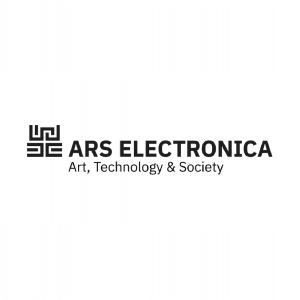 Dr. Gabrielian’s design-research speculating on the future of food production opens in Beijing, China as part of the Human (Un)limited exhibition questioning the position of the human in our environmental future, curated by Ars Electronica.
Dr. Gabrielian’s design-research speculating on the future of food production opens in Beijing, China as part of the Human (Un)limited exhibition questioning the position of the human in our environmental future, curated by Ars Electronica. Dr. Gabrielian is one of three Emerging Designer Award recipients recognized by the Design Futures Initiative.
Dr. Gabrielian is one of three Emerging Designer Award recipients recognized by the Design Futures Initiative.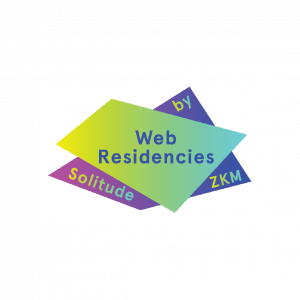 Dr. Gabrielian’s design-research work on water production within human-fungal networks shortlisted for Akademie Schloss Solitude and ZKM | Center for Art and Media Web Residency under the theme of Engineering Care.
Dr. Gabrielian’s design-research work on water production within human-fungal networks shortlisted for Akademie Schloss Solitude and ZKM | Center for Art and Media Web Residency under the theme of Engineering Care.
 Dr. Gabrielian’s design-research awarded Honorable Mention in Fast Company’s World Changing Ideas Awards as work that is poised to help shift society toward more equitable futures.
Dr. Gabrielian’s design-research awarded Honorable Mention in Fast Company’s World Changing Ideas Awards as work that is poised to help shift society toward more equitable futures.

Dr. Gabrielian’s design-research on the future of food production is a finalist for the SXSW Interactive Innovation Awards honoring the best new work that uses design to re-think products, systems and worlds and address the challenges, opportunities and possibilities of the future.
